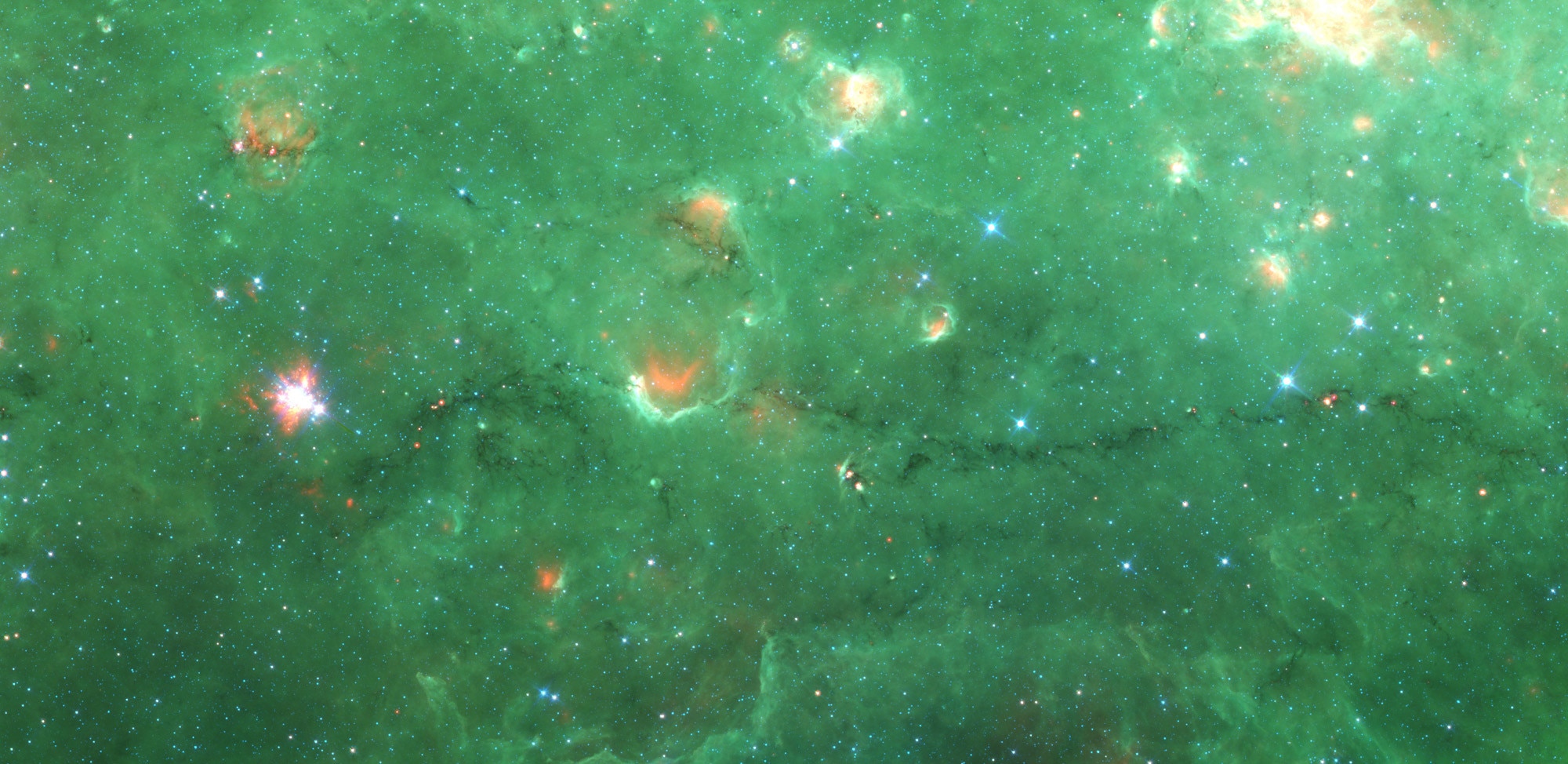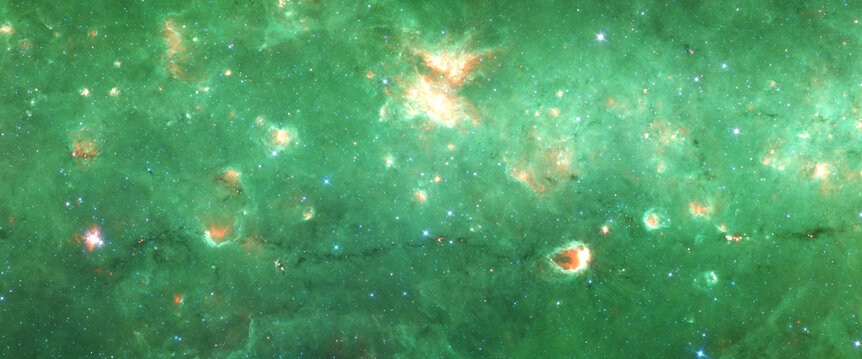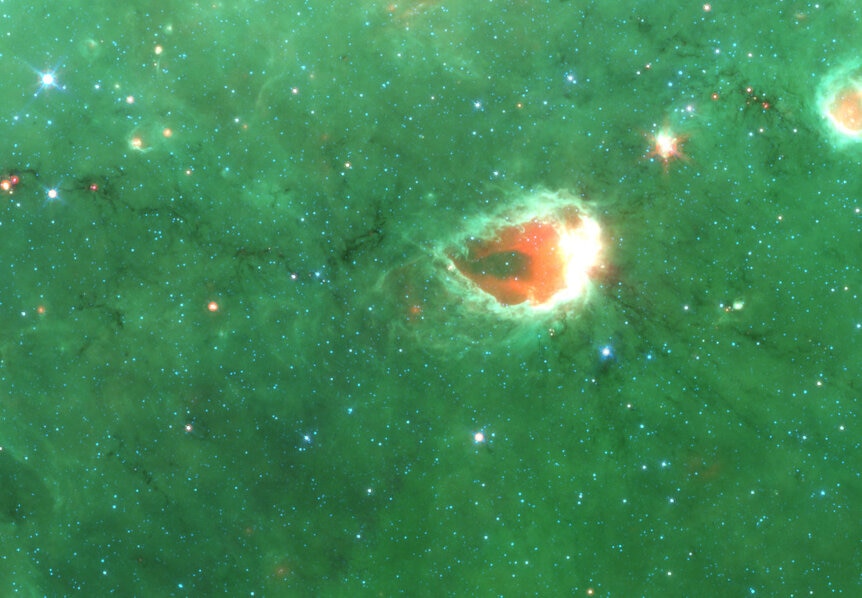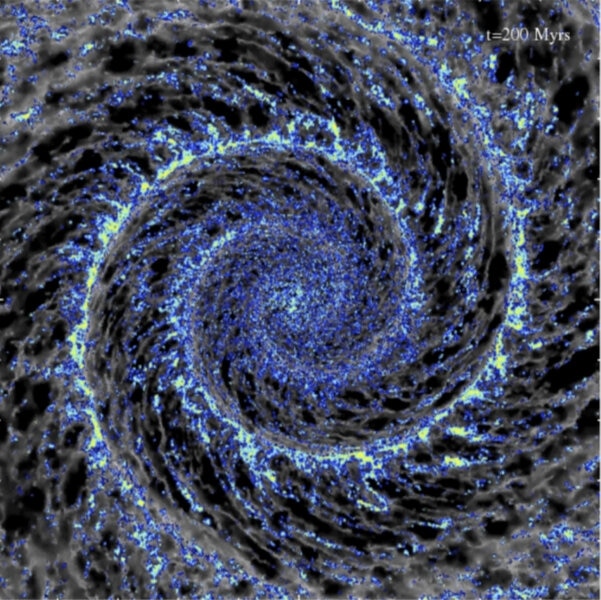Create a free profile to get unlimited access to exclusive videos, sweepstakes, and more!
Nessie Swims Between the Galactic Waves

A monster lurks in the dusty waves of the galaxy. Named Nessie, it’s a long, sinuous, dark beast, with fire in its heart and…sausage instabilities?
Yup. I know, that last one throws me off a little too. Still, it makes for an awesome description and a really cool picture.
What you’re seeing is a mosaic from the Spitzer Space Telescope, a space observatory that sees light in the infrared, well beyond what our eyes can see [click to embiggen, or grab the 4800 x 1890 pixel version...or, if you're feeling lucky, there's also a 7900 x 1200 pixel version, too]. It’s particularly sensitive to galactic dust: Molecules created when stars born (and when they die) that absorb visible light, so clouds of dust look very dark, silhouetted against the background.
Thick clouds of dust choke the Milky Way, but these are usually individual knots of material, dust bunnies, if you like. In 2008, though astronomers spotted dust that appeared to be in a long, thin line. And now, looking over the data, another team of astronomers concludes the dust filament is far longer than previously thought. It’s 300 light years end to end at least, but only one or two light years thick. That gives it the same proportion as an uncooked strand of thin spaghetti (I just checked in my pantry using a ruler, so I’m pretty confident of this. Observational astronomy FTW!)
That’s remarkable! Most structures that long and thin should break apart. And, as it happens, that appears to be what’s going to happen to Nessie soon.
It’s been known for a long time that a long, thin filament of gaseous (or dusty) material that’s allowed to operate under its own gravity should start to clump up. The physics is a bit complicated, but the clumpiness should grow at regular intervals along the filament, collapsing it. After a time, it looks like sausages linked together, pinched every dozen or so light years where the material condenses and forms stars. This is called—you guessed it—the sausage instability.
And so it is with Nessie. Looking even farther out in the spectrum, astronomers found a dozen dense regions in one part of the filament where the material was denser and forming stars. These clumps are roughly separated by 12-13 light years, like beads on a string…or sausages in a chain. They even have about the right mass predicted by theory, 30-300 times the mass of the Sun.
So it looks like Nessie is a long, long tube of star formation. There’s some thought that after time the filament will break up, and we see what look like isolated regions of star formation (like the Orion nebula). They look lonely now, but they used to be part of a much bigger structure.
And we’re not fooling around with this; Nessie has an estimated mass of 100,000 times that of the Sun, giving it lots of raw material to make stars. Interestingly, long filaments like this have been seen in computer models on how spiral galaxies like ours behave. They’ve been seen in real life in other galaxies, but not in our own until now. They’re rather difficult to spot—they exist in between the waves of spiral arms, connecting them, which is why some astronomers call them bones. The thick dust inside the spiral arms makes identifying them a pain.
So there’s a nice poetry to calling it Nessie; it was theoretical, only glimpsed but not clearly seen, much lore was written, and in both cases exists between the waves. The big difference, though, is that this Nessie actually exists.
That’s why, in the end, science is so much better and more satisfying than pseudoscience. Our sea monsters are real.





























